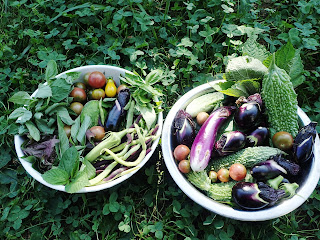My favorite paper: making use of thinned timber from Lake Biwa area
For my handmade books, I've used paper named "Biwako no mori no kininaru kami (meaning paper that turn into trees of Lake Biwa)" produced by kikito.
This paper uses Japanese cedar and cypress timber from forest thinning, so choosing this paper encourages forest thinning, which has been delayed. In many forests in Japan, cedars and cypresses were planted after the Second World War, and now they have grown and in a time for thinning. However, thinning has been delayed as the prices of the timber is now lower and thinning is not a lucrative job, considering the costs of felling, carrying out, and transporting the thinned timber.
This paper uses Japanese cedar and cypress timber from forest thinning, so choosing this paper encourages forest thinning, which has been delayed. In many forests in Japan, cedars and cypresses were planted after the Second World War, and now they have grown and in a time for thinning. However, thinning has been delayed as the prices of the timber is now lower and thinning is not a lucrative job, considering the costs of felling, carrying out, and transporting the thinned timber.
If artificial forests are not properly thinned, they become dark as trees get too dense to let in sunlight. In consequence, bottom weed doesn't grow, making it difficult to store water underground with increased risk of landslides.
Part of the proceeds of this paper is donated for fostering forests in Lake Biwa.
This paper is not stark white as it consists of 70% of recycled paper pulp and 30% of thinned timber pulp (credit system). It doesn't look cheap, and I like its color and texture. It costs a little more than ordinary copier paper, but it is worth the cost; it is good to know that the paper I use was made with consideration of the forest.
I've used this paper for daily printing uses, as well as for my books, for many years.

